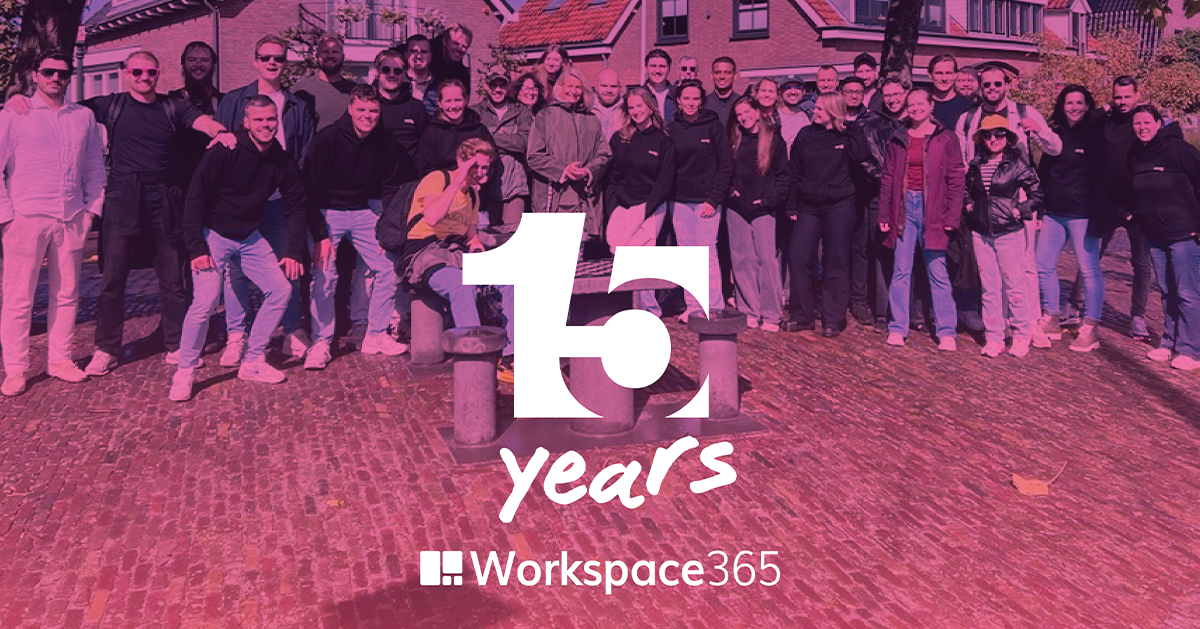The world of IT is constantly changing, and so is the digital workplace. Modern digital workplaces are highly personalised, adaptive and based on smart automation. This translates into the developments and trends we are currently seeing in the market. From Digital Employee Experience and AI to security and the metaverse, these are the digital workplace trends of 2023.
Digital workplace: more and more a priority
The implementation and further development of the digital workplace is becoming more and more of a priority for organisations. Discover 8 digital workplace trends that are important.
#1 Adaptive: the digital workplace adapts
An adaptive digital workplace (such as Workspace 365) is adaptive and dynamic. In other words, the workplace adapts to the organisation and employees, instead of the other way around.
Personalisation is important here. All applications, data, documents, processes and tasks are personalised - meaning tailored to one's own working methods and wishes - offered within one environment. What is shown on the dashboard depends on a person's role, location, network and device, among other things. It's a self-navigating workplace that guides all your employees through the day.
A personalised workplace also offers tasks, processes and information from external systems customised within the digital workplace. An example are applications within the workplace (such as Micro Apps from Workspace 365), which allow the user to quickly perform tasks or view information.
#2 Focus on Digital Employee Experience
A digital workplace improves the Digital Employee Experience (DEX) by integrating all the technologies needed for collaboration, communication and productivity within a single environment. Workflows from different systems are thereby smartly brought together. As a result, employees no longer have to manually switch between applications or search for documents or data.
Because of the importance of a good DEX, it's important to constantly monitor and improve the performance and use of the digital workplace.
#3 Maximising automation
Automation plays an important role in expanding and improving the digital workplace by streamlining routine and repetitive tasks. This leaves employees with more time for strategic and creative work. One trend in 2023 is hyperautomation: by deploying various technologies such as machine learning, robotic process automation (RPA) and natural language processing (NLP), companies can automate more tasks and processes than ever before.
The benefits of automation in the digital workplace are clear: including more efficient and productive working and improved overall business performance.
#4 Intelligent use of AI
ChatGPT has brought a lot of attention to the importance, growth and challenges of artificial intelligence (AI). AI is currently revolutionising the way organisations and people work. Increasingly, artificial intelligence is also becoming relevant to the modern workplace. Think, for example, of applications such as virtual assistants that help with e-mail management and data entry, chatbots that can, for example, provide instant customer service and HR or IT support, AI-based solutions for scheduling meetings or predictive analytics for predictive insights.
Working more efficiently and productively, improved overall business performance: AI within the digital workplace has many benefits. At the same time, there are also concerns, for example in terms of ethics. As an organisation, it is therefore important to think carefully about the benefits and risks of AI and to draw up both policies and best practices for 'responsible AI'.
#5 Transition to the cloud
COVID-19 accelerated the transition to the cloud: we all suddenly needed to be able to work remotely. Organisations therefore migrated to the cloud on a large scale and facilitated remote working. Even in 2023, organisations will continue to be fully committed to cloud migration.
A fully cloud-based digital workplace results in ease of use, scalability, agility, minimal costs, optimal data security and easier management. Moreover, (a digital workplace in) the cloud provides the ideal architecture for further digital transformation initiatives.
#6 Security is more important than ever
The number of security incidents has been rising for years, no type of organisation seems to be spared. Security around the digital workplace should be the top priority in 2023. This is because maximum security measures help, among other things, to protect sensitive information within the digital workplace, prevent cyber threats and be compliant with laws and regulations.
Improving digital workplace security can include strong authentication methods, Conditional Access, minimising user rights, encrypting sensitive data, training employees and establishing a solid disaster recovery plan.
#7 Hybrid working is here to stay
After remote working during the corona crisis, hybrid working has been booming since 2021/2022, with employees working part of the week at home and the other part of the week in the office. By 2022, Accenture research shows, only 36 percent of employees worked entirely in the office. When team members work from different locations, a digital workplace ensures they have the right tools and technologies to collaborate and communicate with each other - regardless of their location and device.
#8 Metaverse for new business opportunities
The metaverse is a virtual 3D world. It acts as an entrance to many online activities and at the same time supports many real-world (business) activities. Within the metaverse, users are all about creating, sharing and interacting with content. The metaverse is the next big thing, if Big Tech is to be believed.
Time will tell whether this will really be the case, in any case it is clear that there are already interesting metaverse applications for companies. A well-known example is Mesh for Microsoft Teams. With it, team members can come together and have the same experiences in a metaverse environment, from any device and via mixed reality applications.
Are metaverse applications integrated within the digital workplace? If so, this can have a lot of added value for organisations. The main benefit is that new, so-called 'immersive' opportunities arise for networking, business interactions, collaboration and communication. But think also of virtual training sessions, product presentations and trade shows.
Not only can the metaverse help save (travel) costs and train employees better. It can also ensure more intense relationships with customers and business associates by offering them attractive, interactive experiences.
The adaptive digital workplace, Workspace 365
Workspace 365 offers all applications, documents, information, data and tasks in one digital workplace. Employees don't have to search for the right information themselves among all the applications, documents and data. No, Workspace 365 evolves into a self-navigating workplace that continuously guides employees in the best possible way. So employees always have access to the right information, applications and tasks, regardless of their device and location.
This way, the digital workplace becomes the foundation not only for more productivity, job satisfaction and security, but also for new digital transformation initiatives. Now and in the future.
All types of applications
A fully cloud-based workplace is of course the best, but unfortunately this is far from possible for all organisations. Fortunately, Workspace 365 allows you to integrate Azure Virtual Desktop, Citrix Workspace, Nutanix Frame and legacy file servers, for example. In addition, you can also add a single remote (legacy) application via Clientless RDP.







